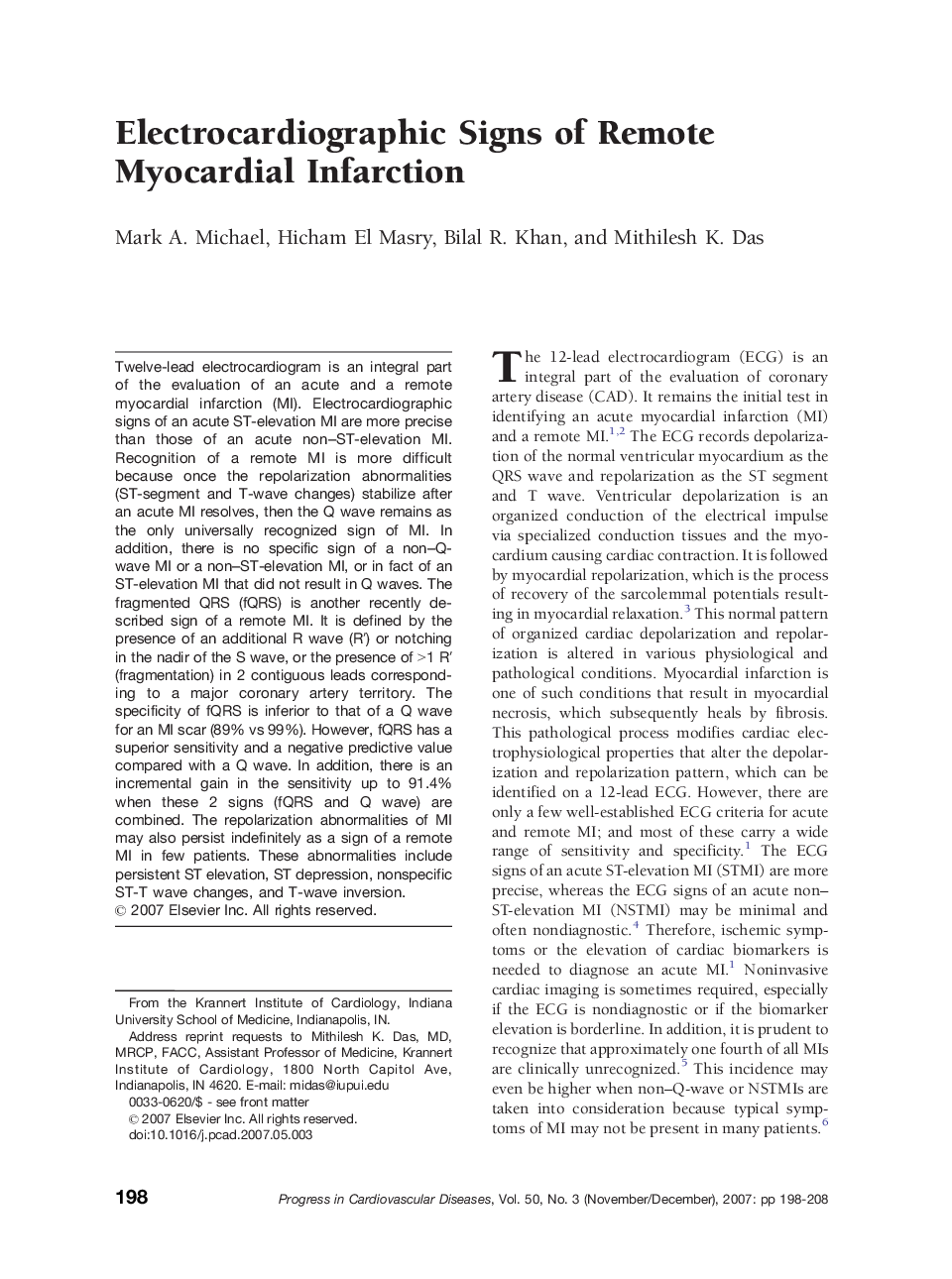| Article ID | Journal | Published Year | Pages | File Type |
|---|---|---|---|---|
| 3007041 | Progress in Cardiovascular Diseases | 2007 | 11 Pages |
Twelve-lead electrocardiogram is an integral part of the evaluation of an acute and a remote myocardial infarction (MI). Electrocardiographic signs of an acute ST-elevation MI are more precise than those of an acute non–ST-elevation MI. Recognition of a remote MI is more difficult because once the repolarization abnormalities (ST-segment and T-wave changes) stabilize after an acute MI resolves, then the Q wave remains as the only universally recognized sign of MI. In addition, there is no specific sign of a non–Q-wave MI or a non–ST-elevation MI, or in fact of an ST-elevation MI that did not result in Q waves. The fragmented QRS (fQRS) is another recently described sign of a remote MI. It is defined by the presence of an additional R wave (R′) or notching in the nadir of the S wave, or the presence of >1 R′ (fragmentation) in 2 contiguous leads corresponding to a major coronary artery territory. The specificity of fQRS is inferior to that of a Q wave for an MI scar (89% vs 99%). However, fQRS has a superior sensitivity and a negative predictive value compared with a Q wave. In addition, there is an incremental gain in the sensitivity up to 91.4% when these 2 signs (fQRS and Q wave) are combined. The repolarization abnormalities of MI may also persist indefinitely as a sign of a remote MI in few patients. These abnormalities include persistent ST elevation, ST depression, nonspecific ST-T wave changes, and T-wave inversion.
